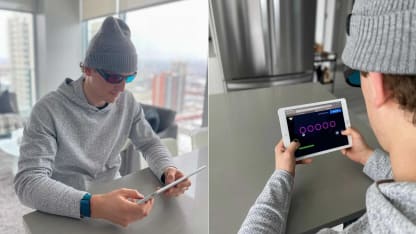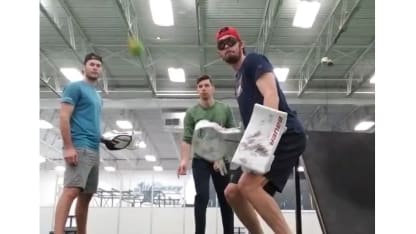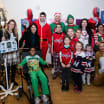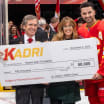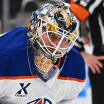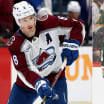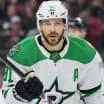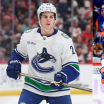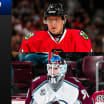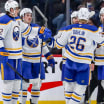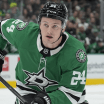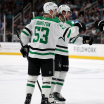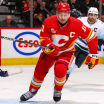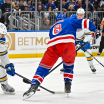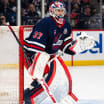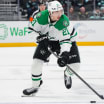Jake Oettinger didn’t hesitate when he was asked what he does to get his eyes warmed up and ready to see and stop pucks in the NHL. He reached back to his locker stall to grab a bag with a picture of a giant eyeball that has well-muscled arms flexing on either side.
It’s the logo of True Focus Vision, a Minnesota company run by visual performance specialist Josh Tucker, who has worked with 30 NHL goalies and 12 NHL teams during the past 18 years.
Inside the bag are a variety of balls -- some that bounce hard, others soft; some with numbers on them, others with odd shapes sticking out to create unpredictable bounces -- and a couple different types of goggles, including strobe glasses. Some goalies who use the system keep their gear in a hard travel case, which also contains a computer tablet with eye-training programs.
“I’ve got all the goodies in here,” said Oettinger, the Dallas Stars’ No. 1 goalie, who was at a gym near his offseason home in Minnesota late last summer when he met Tucker. “All the hand-eye work keeps you sharp and keeps your brain guessing, and that’s a good thing. I didn't get to do the full program this summer like I wanted to, but next summer I'm going to do the full program with Josh.”
It’s probably not a surprise to hear that many NHL goalies spend a lot of time working to improve their vision given how fast and often the puck moves, how many players they look past to find it, and the obvious importance of being able to see it to stop it.
Former NHL goalie Braden Holtby once said the eyes are the “biggest muscle as a goalie” and was famous for the elaborate pregame routine he used to make sure they were properly warmed up before he went on the ice.
Goalies like Connor Hellebuyck of the Winnipeg Jets have become known for visual warmups captured on camera that often include the player sitting on the bench and quickly shifting his focal point from one spot in the rink to another, which, up close, can look like he is trying to keep his eyes on a bug flying quickly around his head.
Some NHL goalies hit the ice without doing anything special to warm up their eyes.
“I'm more of a just-go-out-and-play guy,” said Jonathan Quick, a 17-season NHL veteran now with the New York Rangers. “I think it's more if you are mentally sharp, then your eyes will track the puck. But I could be wrong, right? I know a lot of guys are doing it differently.”
Vancouver Canucks goalie Thatcher Demko has the same approach as Quick, but playing partner Casey DeSmith is one of many NHL goalies who relies on staples like juggling or bouncing balls off the wall to get their eyes and hands warmed up and ready to play.
“I juggle against the wall and have since junior hockey,” DeSmith said. “Obviously in the NHL we have the luxury of having a 15- to 20-minute warmup, so you get to see a lot of pucks before a game anyway, but I want to go on the ice with my eyes already feeling good.”

